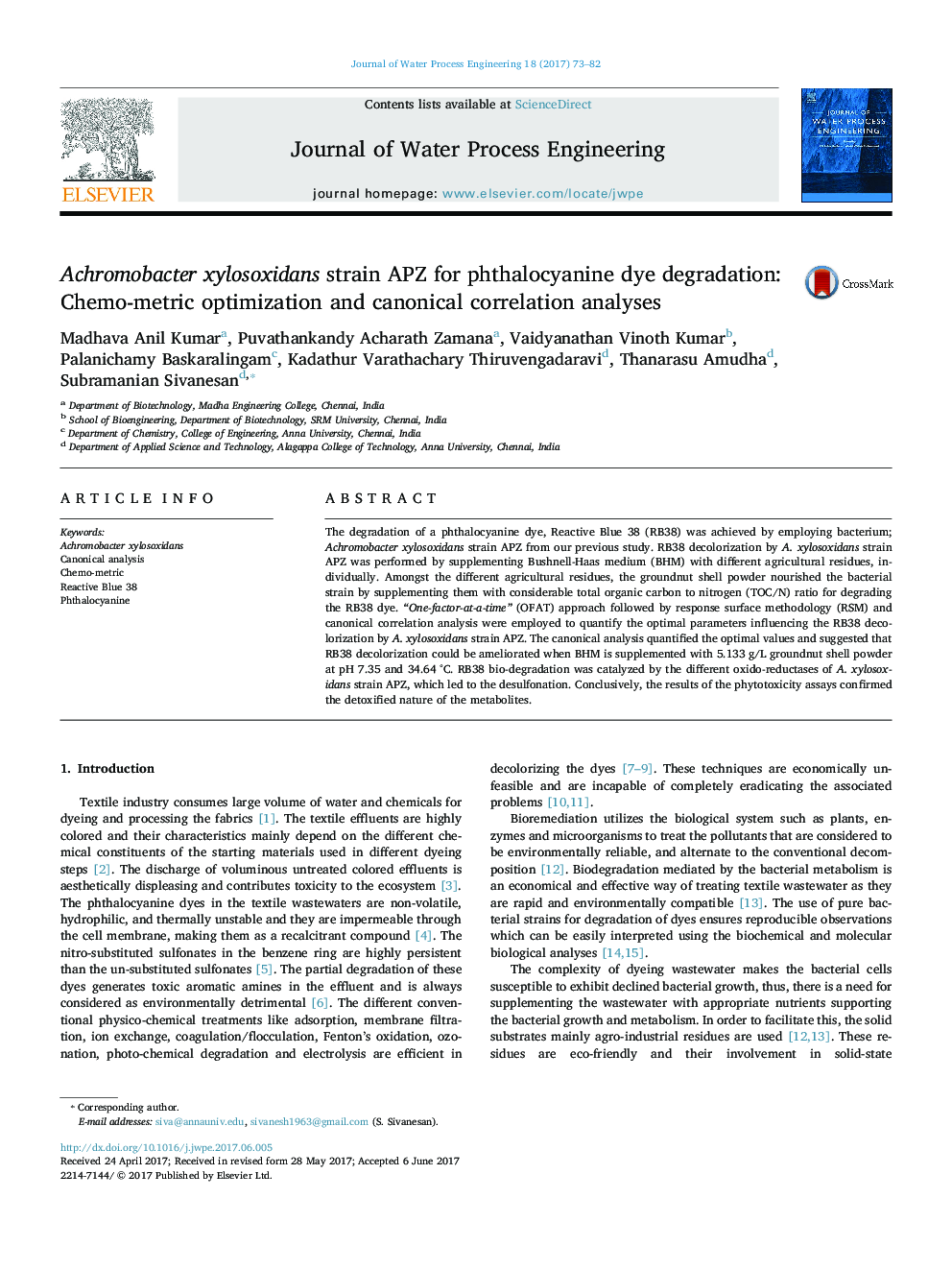| Article ID | Journal | Published Year | Pages | File Type |
|---|---|---|---|---|
| 4910031 | Journal of Water Process Engineering | 2017 | 10 Pages |
Abstract
The degradation of a phthalocyanine dye, Reactive Blue 38 (RB38) was achieved by employing bacterium; Achromobacter xylosoxidans strain APZ from our previous study. RB38 decolorization by A. xylosoxidans strain APZ was performed by supplementing Bushnell-Haas medium (BHM) with different agricultural residues, individually. Amongst the different agricultural residues, the groundnut shell powder nourished the bacterial strain by supplementing them with considerable total organic carbon to nitrogen (TOC/N) ratio for degrading the RB38 dye. “One-factor-at-a-time” (OFAT) approach followed by response surface methodology (RSM) and canonical correlation analysis were employed to quantify the optimal parameters influencing the RB38 decolorization by A. xylosoxidans strain APZ. The canonical analysis quantified the optimal values and suggested that RB38 decolorization could be ameliorated when BHM is supplemented with 5.133 g/L groundnut shell powder at pH 7.35 and 34.64 °C. RB38 bio-degradation was catalyzed by the different oxido-reductases of A. xylosoxidans strain APZ, which led to the desulfonation. Conclusively, the results of the phytotoxicity assays confirmed the detoxified nature of the metabolites.
Related Topics
Physical Sciences and Engineering
Chemical Engineering
Chemical Engineering (General)
Authors
Madhava Anil Kumar, Puvathankandy Acharath Zamana, Vaidyanathan Vinoth Kumar, Palanichamy Baskaralingam, Kadathur Varathachary Thiruvengadaravi, Thanarasu Amudha, Subramanian Sivanesan,
